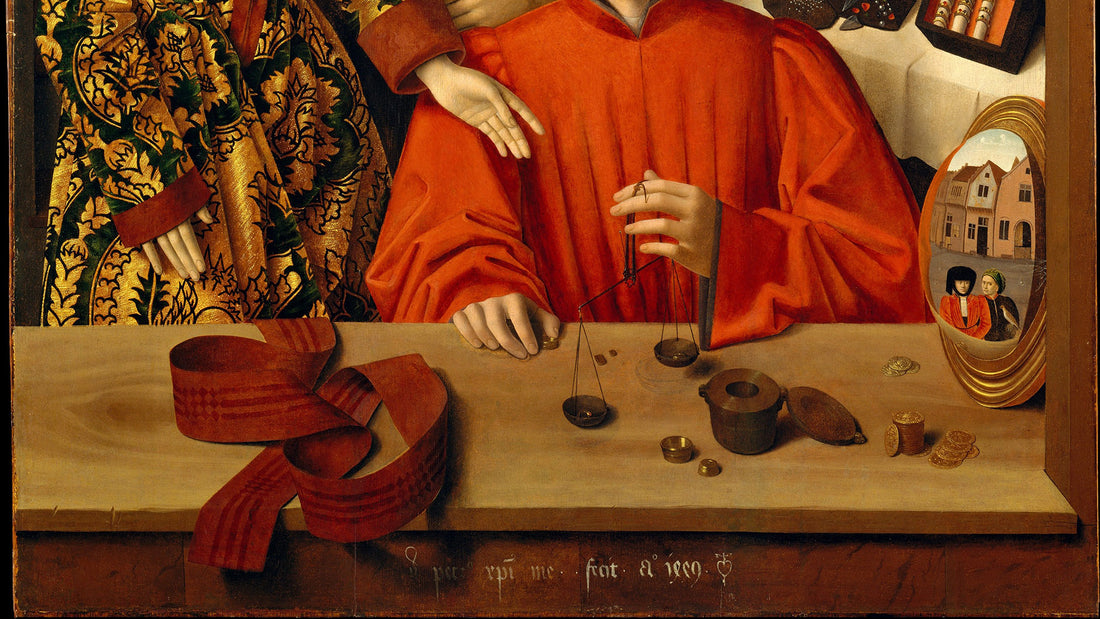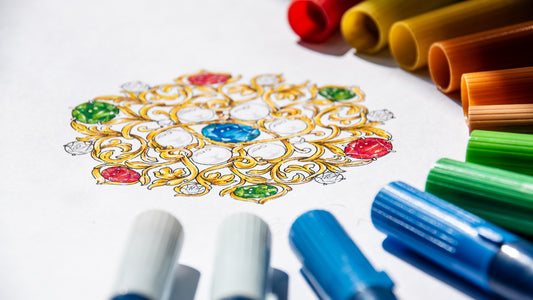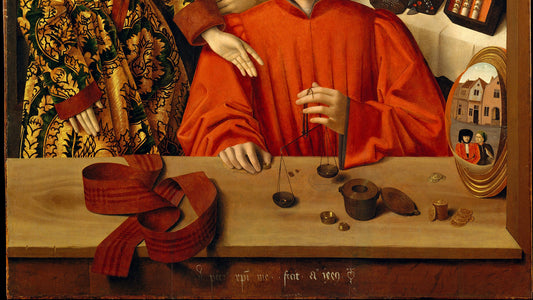Imagine a time when goldsmithing was just basic metalwork. During the Renaissance, jewellery evolved into a means of personal expression and display of status. The concept of "disegno" emerged as society then found a leap in interest for combining technical skills and imagination. Still having an impact on how we adorn ourselves in the present day, it is a fascinating era, as Katerina explores the history and craftsmanship of Renaissance goldsmiths.
The Significance of Disegno in Renaissance Art
The harmony between mind and hands was the most powerful weapon for Renaissance goldsmiths. Sixteenth-century Europe, unlike the Medieval era, supported goldsmiths hugely and jewellery was evolving to be more than simple metalwork. Artists sought inspiration from the Ancient Greeks and Romans, deriving classical forms in sculpture for their works. The growing social demand for emotion-oriented design meant that more people had become eager to wear and gift jewellery for various motives, including personal displays of affluence, romantic tokens, reminders of human mortality, and religious devotion.
Bejewelled hands
By this time, wearing multiple rings was a clear trend. Both men and women were known to enjoy signalling their wealth, status and business acumen in this way. However, less was indeed more. Art historian Diana Sacrisbrick writes in Rings: Symbols of Wealth, Power and Affectio, just one or two rings bearing high-quality engraved gemstones were sufficient to show good taste. It was during this period that the concept of disegno flourished, capturing the link between art and science.

Above: Gold pendant with a bust of Queen Elizabeth I cut out in silhouette. Around 1570–1580
.
Creativity Beyond Technique in Modern Design
With its meaning derived from ‘design’, disegno conveyed the dual powers of intellectual and technical prowess in an artist. The word closely links with ingegno (from the Latin ingenium), and prominent thinkers of the time claimed these two were interconnected. It also reflected high expectations at the time. Lorenzo Ghiberti, a sculptor, highlighted that the importance of disegno was its essential role to painting, sculpture, and goldsmithing. Under the idea, skills on the purely technical front were in vain. But without knowing how to realise grand concepts by hand, an artist could put themselves at a disadvantage.
Anyone, particularly goldsmiths, who showed they could apply disegno into their patrons’ work increased their chances of becoming coveted makers of luxurious items. By conveying a deeper message in its final design, metalwork became a prestigious symbol of displaying one’s virtue by taste, piety, or affection.

Rings as important symbols
As Pierre Woeiriot states in his book Livre d'anneaux d'orfèvrerie (1561), Renaissance goldsmiths had the double-advantage of both sculpting and painting skills that merged into a remarkable influence on other forms of art. For one example, Botticelli apprenticed as a goldsmith before he went on to be one of the greatest painting masters in history. Owning coveted gemstones was itself a status symbol, while getting one engraved by celebrated goldsmiths attested to the virtuous power of the patron.
In noble circles, familial honour held central importance and could be displayed through the virtuous gifting of gold signet rings from one generation to the next. Another common motif was initials and flowers carved in rings, making them the desired personalised gifts for someone to ask for their partner’s commitment.
Popular Belief and the Significance of Gemstones
Growing interest in artistic and scientific endeavours were also influenced by the esoteric. In line with popular belief at the time, rulers from Philip II of Spain to Queen Elizabeth credited medicinal and spiritual qualities of gemstones to their wellbeing.
The surge in interest for natural sciences also had an affect on timepieces. Around this period, watches displayed the day of the month and even the moon's phases against refined piercing work. They were, however, more displays of goldsmith skills than accuracy. Watchcases became increasingly ornate by the late-seventeenth century, with some designs incorporating enamels and gems, in efforts to showcase their artistic value.
The Timeless Appeal of Craftsmanship
However, it would be misleading to label a certain era as one that goldsmiths had the highest regard. Creativity goes beyond technique as people can appreciate the intentions and meanings behind the designs. The Neo-Renaissance phase in modern design was particularly significant, with designers drawing inspiration from the intricate motifs and gilded surfaces commonly found in 16th century Italy. Signets, with their classical meanings and solid appearance, have remained popular even in the contemporary trend of wearing one or multiple pieces together.
Ultimately, the Renaissance goldsmith’s collaboration of the mind and hands was their most powerful asset. In recognition of this captivating era, which serves as one of the main inspirations for our collections, we admire the remarkable craftsmanship of goldsmiths who were dedicated to reflecting life in their work.
We wrote this article to share what we’ve been reading on design, history and recent culture. If you liked this content, do share it with someone who would appreciate it.
-
Sources
Christus, Petrus. “A Goldsmith in His Shop.” Metmuseum.org, The Metropolitan Museum of Art.
Syson, Luke and Thornton, Dora Objects of Virtue: Art in Renaissance Italy, London: The British Museum Press, 2001.
Scarisbrick, Diana, Rings: Symbols of Wealth, Power and Affection, London: Thames and Hudson, 1993.





